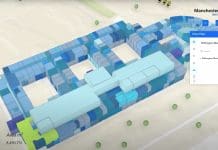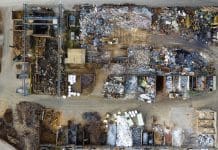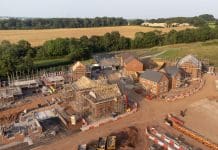Eighteen months after its launch, the Digital Twin Hub community has exceeded 2,000 members, and its most recent summit has evidenced the overwhelming enthusiasm and support from a diverse range of participants for digitalisation and connected digital twins across the UK and beyond
The National Digital Twin programme (NDTp) is all about creating technical foundations and providing a co-ordinated and vibrant community platform for organisations and industries to share expertise and know-how, and to support each other to reach digital twin goals.
Increased interest in the NDTp and rapid membership growth on the Digital Twin Hub, show us that the desire to develop and ultimately to connect digital twins across the built environment is accelerating and that the natural response is to work together.
This year has proved pivotal in terms of active engagement with our members to better understand their digital maturity and needs, especially through surveys, community activities and international summits. And in parallel is the publication of key documents including the Digital Twin Toolkit to help companies make their business case and the Digital Twin Standards roadmap, a culmination of work by the British Standards Institute (BSI), which enables a framework for information management and sets out our programme for the next few years.
To make learning and conversations easier we have made great strides in making the Hub more accessible and have introduced greater opportunities for member participation. Along with new media features and expanded research resources, we are progressing a number of exciting projects and partnerships. Here are some of the highlights.
Developing our community
“The DT Hub has been incredibly useful, and we’ve pointed many other organisations to it. In an asset management journey, the DT Hub is a reference.” Daniel Braund, Sellafield.
Our approach of ‘learning by doing and progressing by sharing’ has enabled our web portal, the DT Hub, to grow its content steadily alongside its membership. We have been mindful in our expansion to make sure we address everyone’s needs, and we believe it has paid off. Not only do we have a diverse community of more than 2,000 members from industry, academia and policy, but also one that is setting industry standards and being emulated in other parts of the world.
Host to one of the UK’s largest shared collections of information and reference relating to digital twins, we intend the Hub to be ‘the’ place to meet for those interested, invested and working in digital twin technologies. These past few months have seen us focusing our attention on making the Hub more accessible and providing greater opportunities for site visitors to interact with one another.
We are immensely proud of our which develops resources for the digital twin community ensuring that the wealth of knowledge and expertise is shared and can benefit the whole community. A popular output of the Gemini programme is the weekly stand-up call or Gemini Call featuring updates from the NDTp and a feature focus from community speakers from a range of sectors speaking about their digital twin progress. It is hugely encouraging that these talks are so well received, with organisations lining up to take part.
Among other activities to help organisations realise a digital twin, is the upcoming launch of the DT Toolkit collaborative workshop. The tool, produced with digital collaboration platform specialist Axis, allows them to run their own online workshops, bringing together colleagues who can co-create the foundations of their digital twin business case. So, whether you are at the start of your digital twin journey or wanting to drive impact or scale-up, there is a workshop template for you.
This year, we have also gone a long way in increasing the overall volume of knowledge on the DT Hub and in recognising those who have made the contributions. Knowledge management is a vital part of what we are striving for, and a new knowledge taxonomy is making it easier for people to find the content they need.
Knowledge sharing
One of the strengths of the community is its contribution to the better understanding of the community itself. This is demonstrated in the surveys that underpin the work of the DT Hub. We will shortly be running a second Smart Infrastructure Index (SII) Survey which tracks, in the first instance, the digital and organisational maturity levels of our asset owner and operator members. What stands out from last year’s survey is the correlation between the value an organisation places on data and the use of technology for performance measurement of assets and its readiness to create a digital twin. It will be interesting to compare DT Hub community progress with baseline SII measures year-on-year.
The British Standards Institute (BSI) Digital Twin Standards Roadmap is another milestone in the digital twin journey. It builds on existing standards for developing digital twins and directs us to form a framework of four new digital twin standards: general principles, reference architecture, digital representation of built environment elements and information exchange. In real terms as it develops, the roadmap will encourage and enable consistency and compatibility in approach for everyone involved.
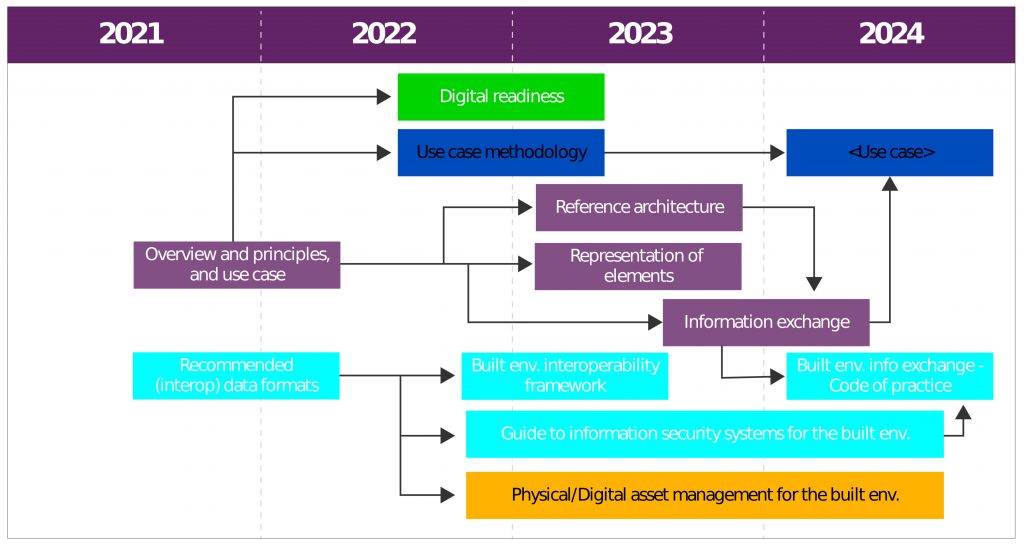
Alongside this framework, the DT Hub is truly becoming a rich community of knowledge and knowledge sharing. In July we witnessed overwhelming support and engagement from guest panellists and an online audience of over 400 as we hosted the Cyber Physical Fabric Summit on behalf of the Royal Academy of Engineering – recognising the need to combine the physical and digital worlds if we are to act in time to meet the enormous challenges facing our populations and infrastructures. The benefits of such an approach will come from linking individual components of technology to work together at both a national and indeed, international scale.
Demonstrating the benefits
The route we are taking to achieve this ‘interoperability’ of components will ultimately deliver a new infrastructure to equip us to be more resilient and plan for urgent challenges.
With this in mind, we are launching a digital twin project demonstrator across energy, water and telecoms networks to provide a practical example of how connected data and greater access to the right information can improve climate adaptation and resilience. The Climate Resilience Demonstrator project (CReDo) looks specifically at the impact of extreme weather caused by climate change, in particular flooding, on energy, water and telecoms networks. It will show how those who own and operate them can use secure, resilient information sharing across sector boundaries to minimise the impact of flooding on network performance and keep services running.
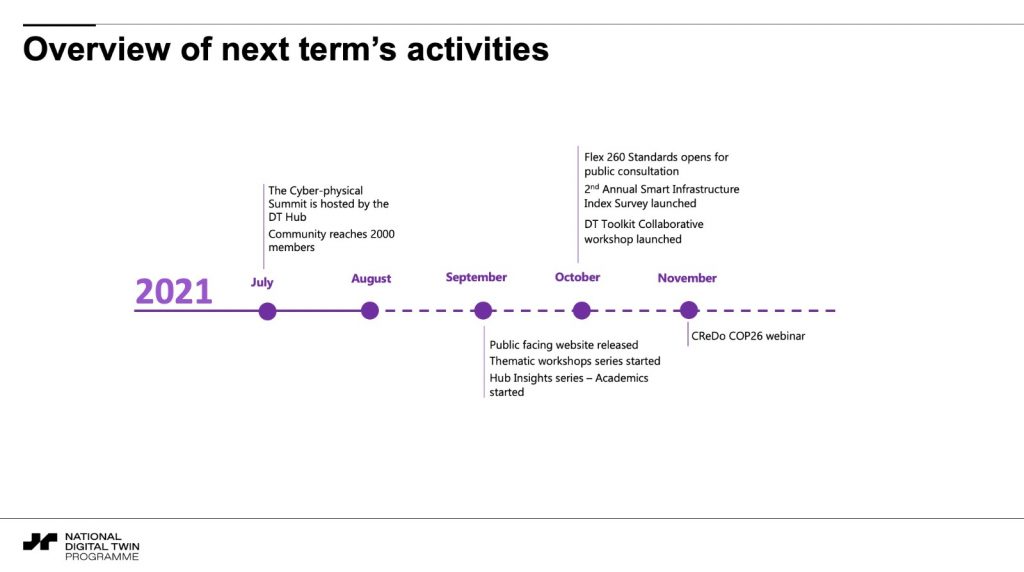
What next?
As a team, the NTDp is keen to broaden the engagement and exchange of information already achieved through the DT Hub with other sectors involved with digital twins. Among the enhancements to our knowledge centre will be a community council along with dedicated spaces, tools and social features for users to interact with each other. Moreover, we wish to grow the depth and breadth of our community, to be fully representative of the world we live in. What we are facing is everybody’s challenge and we must work together to find the solutions.
Samuel Chorlton
Chair







